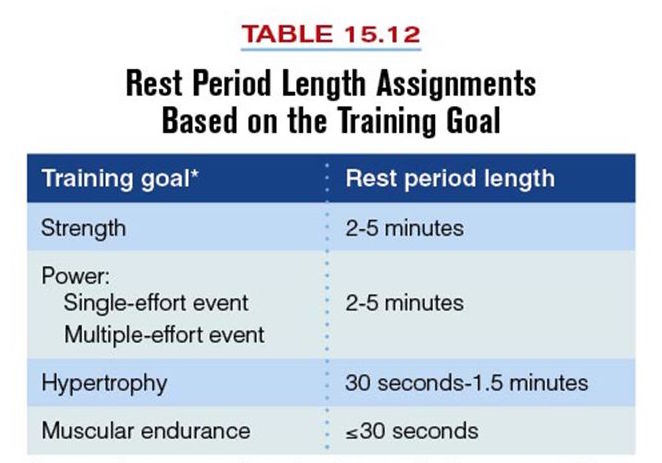The Benefits of Rest Intervals During Resistance Training
Hey everyone, my name’s Taylor Kennon and I’m the newest movement specialist at Perform for Life. I recently graduated with my master’s degree in Kinesiology and I’m excited to begin my career here in San Francisco. Something that really interests me is the physiology behind exercise and the research supporting it. I wanted to write a little bit about rest interval timing because it’s an important variable that, when used properly, can be used to amplify the effects of a good exercise program.
Exercise causes adaptation in the body because it causes physiological stress, which causes the body to improve. Some examples of physiological stress from an acute bout of exercise are glycogen storage in the muscle, acidity in the muscle and blood, and decreased enzyme availability. All of these stresses cause the body to in turn increase its capacity to handle that specific stress in the future, resulting in an increase in performance for future workouts. For example, after the body becomes more acidic following a resistance training bout, the body can handle (buffer) that amount of acidity more efficiently in the future.
There is ample research advocating the use of multiple sets of an exercise during resistance training to induce increases in muscular strength and hypertrophy (muscle growth) adaptations in the body (Kramer et al., 1997). The amount of time taken between these sets are known as rest intervals, which have important implications in both acute responses and chronic adaptations to a resistance training program. According to the National Strength and Conditioning Association (NSCA), rest intervals should differ based off of the training goal, whether it be muscular strength, muscular hypertrophy, or muscular endurance.
If multiple sets of an exercise are used, the physiological stress to the body can be repeated, causing greater adaptation and inducing the associated increases in performance (Krieger, 2009). Each type of goal calls for a different rest interval, and if the rest intervals are correct according to the training goal, the stress can be even greater. That’s why rest intervals are so important: they allow for manipulation of the amount of physiological stress. Take a look at the table below to see a few different ideal rest period lengths:
Source: NSCA, Essentials of Strength and Conditioning (Baechle & Earle, 2000)
Depending on the training goal, long or short rest intervals should be used. For example, if the training goal is muscular hypertrophy or muscular endurance, shorter rest intervals are required. This is because these two training goals require incomplete rest to cause a greater amount of stress to the body. Conversely, strength (and power) require higher rest intervals because this training goal requires a more complete rest to perform in subsequent sets. For example, if you perform the bench press for 5 repetitions at 85% of your 1 repetition maximum (strength training parameters), you would need a long rest interval to perform on the next set due to the high intensity (weight). With muscular hypertrophy and endurance, a shorter rest is more ideal because the intensity isn’t as high and one could still perform optimally in subsequent sets, even with the short rest intervals.
Another important thing to note is the effect that rest interval length has on hormone production. There’s an abundance of research supporting the claim that shorter rest between sets of an exercise causes a greater hormone response for exercise when measuring for anabolic hormones such as testosterone and growth hormone. Indeed, a study by Buresh and Berg (2009) showed that the anabolic hormone response is greater with 1-minute rest intervals when compared to 2.5-minute rest intervals during resistance training. Both of these hormones are paramount to building and maintaining muscle mass.
If repeated sets are used in a resistance training program, rest intervals are important to consider so that the correct amount of muscular recovery can be obtained between sets, depending on the training goal. If rest intervals are used properly, the appropriate amount of physiological stress can be obtained, leading to the associated hormone and performance benefits. At Perform for Life, we want to help you reach your fitness goals, and using correct rest intervals as a part of an effective program designed to properly stress the body will help you optimally do so.
---
Sources:
Kramer, J. B., Stone, M. H., O'bryant, H. S., Conley, M. S., Johnson, R. L., Nieman, D. C., ... & Hoke, T. P. (1997). Effects of single vs. multiple sets of weight training: impact of volume, intensity, and variation. Journal of strength and Conditioning Research, 11, 143-147.
Krieger, J. W. (2009). Single versus multiple sets of resistance exercise: a meta-regression. The Journal of Strength & Conditioning Research, 23(6), 1890-1901.
Book source: Baechle, T. R., Earle, R. W., & National Strength & Conditioning Association (U.S.). (2000). Essentials of strength training and conditioning. Champaign, Ill: Human Kinetics.
Buresh, R., Berg, K., & French, J. (2009). The effect of resistive exercise rest interval on hormonal response, strength, and hypertrophy with training. The Journal of Strength & Conditioning Research, 23(1), 62-71.












